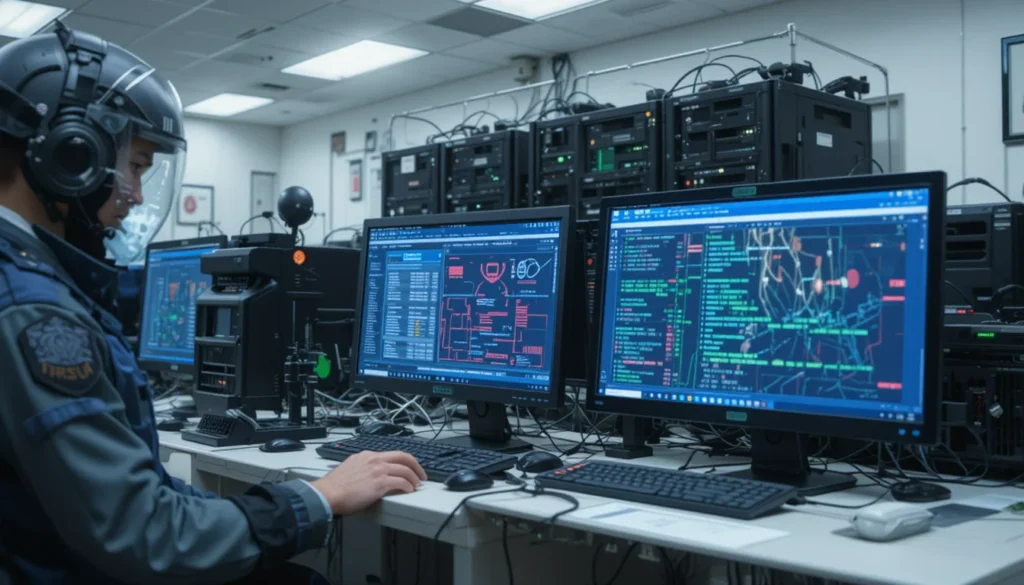Overview
Interpol has dismantled a vast global infostealer malware network responsible for stealing over $130 million in illicit gains. The operation, codenamed Operation Synergia, coordinated 60 law enforcement agencies across 55 countries, leading to hundreds of raids, arrests, and the takedown of key cybercriminal infrastructure.
The international crackdown targeted developers, users, and affiliates of major infostealer strains like RedLine, Raccoon, and Vidar, which harvest passwords, banking data, and sensitive files. This milestone marks a significant blow to the cybercrime-as-a-service ecosystem.
Key Facts
- Operation Synergia was led by Interpol, in partnership with Europol, FBI, and national cybersecurity agencies.
- Over 130 million stolen credentials were recovered.
- 16 suspected operators and users were arrested across multiple countries.
- Authorities seized 70 servers used to distribute and operate infostealer malware.
- Infostealers like RedLine, Raccoon, and Vidar were involved in attacks on thousands of organizations.
- Malware was often spread through phishing, cracked software, and fake browser updates.
- Interpol used advanced AI and cyber forensics to track infrastructure and trace criminal activity.
- The total estimated financial damage exceeds $130 million globally.
What’s Verified and What’s Still Unclear
Verified:
- Arrests, seizures, and takedown of infrastructure were confirmed by Interpol and national law enforcement.
- The malware types involved (RedLine, Vidar, Raccoon) and their impact are backed by cybersecurity reports.
- Credential theft and resale via dark web marketplaces have been documented.
Unclear:
- The full list of affected organizations is not public.
- The identities of several arrested individuals remain undisclosed.
- Whether the malware developers were arrested or just their affiliates is not confirmed.
Timeline of Events
- Early 2024: Global law enforcement agencies begin investigations into credential theft rings.
- March 2024: Interpol begins coordinating Operation Synergia with global partners.
- May 2024: Intelligence gathering and digital forensics accelerate with AI-based detection.
- June 2025: Coordinated raids are launched across 55 countries.
- June 24, 2025: Interpol publicly announces the successful disruption.
Who’s Behind It?
The malware campaigns are believed to be run by loosely connected cybercriminal syndicates operating under cybercrime-as-a-service models. Affiliates purchase or rent access to infostealers like RedLine, Vidar, and Raccoon to harvest login data and sell it on dark web forums. The developers provide backend support, updates, and dashboards for managing stolen data.
Interpol’s arrests primarily targeted affiliates and distributors, but investigations are ongoing to reach the core developer groups, who may be based in Russia, Eastern Europe, and Southeast Asia.
Public & Industry Response
The cybersecurity industry welcomed the crackdown. Major players like Kaspersky, Mandiant, and Microsoft applauded the takedown as a strong deterrent.
Users on social media and cybersecurity forums lauded the operation, though many warned that infostealer markets are resilient and will quickly adapt.
Governments urged businesses to implement MFA, endpoint protection, and credential monitoring in light of the recovered data.
What Makes This Unique?
This is one of the largest coordinated crackdowns on infostealer malware in history. The combination of AI-led tracking, multi-agency cooperation, and large-scale infrastructure disruption sets it apart.
Unlike typical takedowns focused on one malware strain, Operation Synergia tackled the entire infostealer-as-a-service ecosystem, impacting both developers and users.
Understanding the Basics: What Are Infostealers?
Infostealers are a type of malware designed to steal sensitive data such as:
- Login credentials
- Browser cookies
- Autofill data
- Cryptocurrency wallet files
- FTP, VPN, and RDP credentials
They are often distributed through phishing emails, cracked software downloads, or malicious browser extensions. Once installed, they silently extract and transmit user data to command-and-control servers, where it’s sold or exploited.
What Happens Next?
Interpol and its partners will:
- Continue forensic analysis of seized infrastructure
- Work to identify victims and notify organizations of potential credential leaks
- Pursue remaining threat actors and developers
- Collaborate with cybersecurity vendors to strengthen defenses against infostealers
End users are urged to:
- Change passwords immediately
- Enable multi-factor authentication (MFA)
- Run security scans for potential malware infections
- Avoid downloading software from untrusted sources
Summary
Interpol’s $130M infostealer crackdown is a major win for global cybersecurity. By dismantling the infrastructure and arresting key players, Operation Synergia significantly disrupts the cybercrime economy based on stolen credentials.
Yet, this takedown is not the end—infostealer markets evolve rapidly. Continuous vigilance, user education, and global cooperation remain critical in the fight against malware-driven cybercrime.
